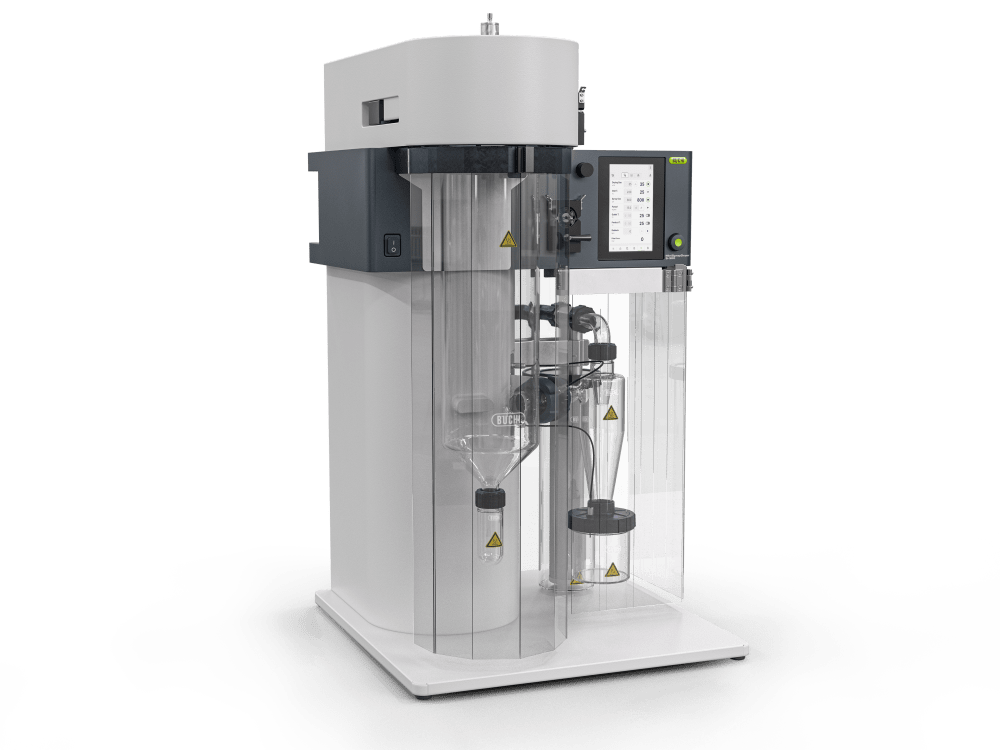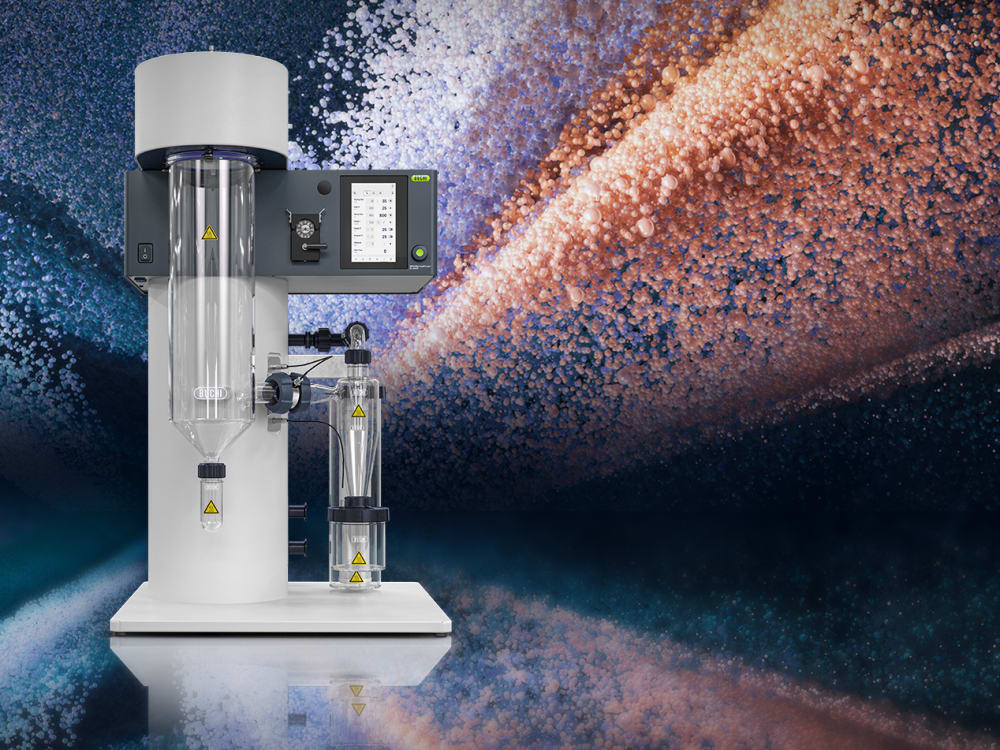Unlocking Drug Potential with Spray Drying: A Must-Have Tool for R&D

Hello, and welcome back to the Colorful Researcher’s blog. In our last blog, Peter discussed how AI is accelerating the drug discovery process and putting pressure on chemists, who must find ways of developing these potential drugs for subsequent testing or production. In his post, Peter explained how small instruments like BUCHI’s Glass Oven G-300 are great for working with small samples quickly and efficiently. Following on from this, I would like to focus on spray drying and how our Mini Spray Dryer S-300 is also ideal for R&D.
Spray drying can solve a wide range of problems for chemists and formulation scientists. It transforms liquid solutions into stable, free-flowing amorphous powders with precise particle sizes that can dramatically improve a drug’s shelf-life, bioavailability, taste, and therapeutic effectiveness. This simple yet powerful technology can even be used to develop complex treatments like RNA therapeutics, inhalable medications, and nutraceuticals. Unlike traditional drying methods, spray drying is faster, more scalable, and cost-effective—making it ideal for early-stage research and development.
Using Small Spray Dryers for R&D in Drug Development
Small spray drying instruments, like the Mini Spray Dryer S-300, are an R&D scientist’s best friend. They allow precise control of drying parameters—such as temperature, airflow, and particle size—and are straightforward to operate, making them ideal for developing robust, reproducible methods. Importantly, formulations created in small lab-scale dryers scale up seamlessly to larger industrial units, streamlining the transition from research to market.
Let’s take a look at two compelling examples—gentamicin and cannabis—to see how spray drying can enhance drug delivery, improve stability, and optimize therapeutic effectiveness.
Example 1: Gentamicin Microencapsulation for Targeted Antibiotic Delivery
Gentamicin is a potent antibiotic used to treat serious infections. However, chemists face a challenge getting the drug where it is required. Bacteria like brucella abortus are intracellular—they hide inside our cells, using them as shelters. Many antibiotics, such as gentamicin, struggle to enter these cells, meaning they can’t reach high enough concentrations inside the cells to kill the bacteria effectively. This makes treatment difficult and often requires higher doses, increasing side effects and the risk of kidney damage.
How can spray drying help?
Spray drying can encapsulate antibiotics (like gentamicin) into small, specialized microparticles, often made from biodegradable materials like Poly(lactic-co-glycolic acid) PLGA, which are specifically designed to be taken up by immune cells (such as macrophages) where intracellular bacteria typically reside.
By encapsulating gentamicin inside PLGA microspheres, scientists have achieved remarkable improvements:
- Targeted Intracellular Delivery: PLGA microspheres are readily taken up by macrophages, delivering gentamicin where Brucella bacteria reside.
- Sustained Drug Release: The microspheres slowly release gentamicin over time, reducing dosing frequency and maintaining effective therapeutic concentrations.
- Reduced Toxicity: Targeted delivery means lower doses can achieve greater efficacy with fewer systemic side effects.
- Enhanced Stability: Encapsulation protects gentamicin from degradation, prolonging its shelf life and maintaining its potency.
Example 2: Cannabis Nanoemulsions for Improved Bioavailability and Taste
Cannabis-based products, such as CBD (cannabidiol) and THC (delta-9-tetrahydrocannabinol), offer numerous therapeutic benefits but present formulation challenges due to their oily, hydrophobic nature and bitter taste.
How can spray drying help?
Spray drying provides an elegant solution by converting cannabis oils into readily dispersible, tasteless powders.
Here’s how it works:
- Nanoemulsion Preparation: Cannabis oils are emulsified into extremely small droplets (nanoemulsions) using surfactants and encapsulants.
- Spray Drying: These nanoemulsions are then rapidly dried into stable powders using gentle heat under controlled conditions.
The benefits of this process are significant:
- Enhanced Bioavailability: Nano-sized droplets dissolve rapidly, increasing absorption and efficacy.
- Versatile Formulations: Powders can be easily formulated into capsules, tablets, beverages, and edibles, expanding product possibilities.
- Taste Masking: Encapsulation hides the bitterness of cannabis oils, making them more palatable.
- Extended Shelf Life: Powders resist oxidation and degradation better than oils, ensuring long-term stability.
These examples show how spray drying unlocks possibilities that traditional methods can’t match. It improves stability, increases bioavailability, and simplifies formulation challenges—all crucial for successful drug development.
Ready to explore spray drying for your R&D projects? If you have questions regarding any potential applications, don’t hesitate to reach out to us or check out the resources and equipment options below to learn more.


